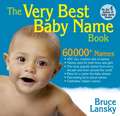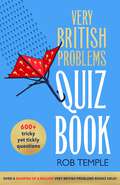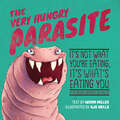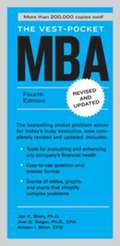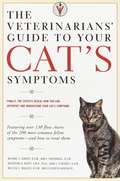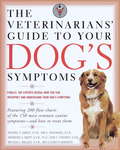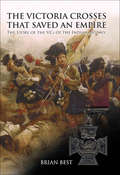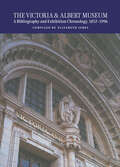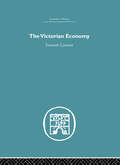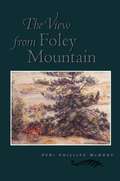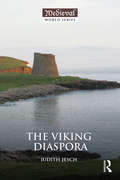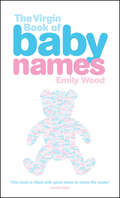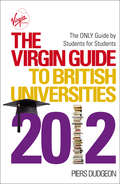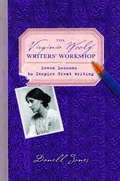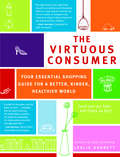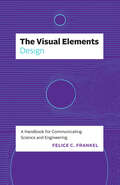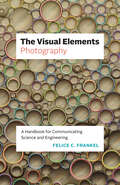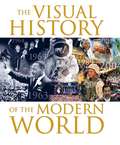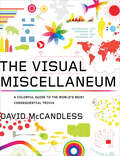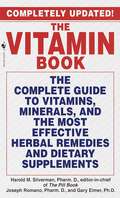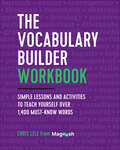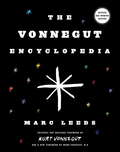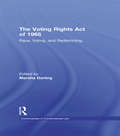- Table View
- List View
The Very Best Baby Name Book
by Bruce LanskyThe very best baby name book just got better! Now with more than 60,000 popular and unusual names for boys and girls, this book provides expectant parents with abundant information on names, including origins, meanings, variations, fascinating facts, and famous namesakes. The following helpful features make finding the perfect name for your baby fun and easy: -- "Baby Name Guru" Bruce Lansky provides advice on how to choose a name for your baby and how to customize a popular name -- Popular names from around the world, including thousands of French, English, Latin, Hebrew, Arabic, Greek, German, Scottish, Welsh, Italian, Russian, Japanese, Chinese, Scandanavian, Polish, Native American, Hawaiian, African, and Hindi names -- Icons to identify names used for both boys and girls -- Over 5,000 names African-American families often choose for their children -- Over 5,000 names that Hispanic families commonly use -- More than 300 fun lists to help you brainstorm names, including a list of names celebrities are choosing for their children -- Stereotypes of commonly used names -- Plans for a name-the-baby shower by Becky Long, author of Themed Baby Showers The most useful, helpful, and fun collection of names on the market!
The Very British Problems Quiz Book
by Rob TempleWhat does 'custard and jelly' mean in cockney rhyming slang?Which biscuit has half of its name on top of the cooker and the other half on the door?And 25 million of what drink are served by British Airways each year?We Brits can't get enough of a quiz. Stumped for office party chit-chat? Quiz. Midweek visit to the pub? Quiz. Stuck inside in pyjamas on a rainy night and in the mood to cause a big family argument? You got it - quiz.This book is correspondingly filled with questions on all things wonderfully and unequivocally British - you'll find all sorts of tickly teasers, complex conundrums, worrisome word searches and much more on topics ranging from our iconic weather to types of cake. Best enjoyed with a cup of tea and your favourite biscuit(s).***ANSWERS: Telly, Hobnob, buy the book and find out!***Praise for Very British Problems'Had us guffawing into our Earl Grey tea' Bella'My favourite twitter account at the moment is Very British Problems (@soverybritish) . . . it makes me laugh out loud' Tom Hiddleston'Hilarious' Daily Express'Temple pays affectionate and comic homage to the sheer quirkiness of being British' Good Book Guide
The Very British Problems Quiz Book
by Rob TempleWhat does 'custard and jelly' mean in cockney rhyming slang?Which biscuit has half of its name on top of the cooker and the other half on the door?And 25 million of what drink are served by British Airways each year?We Brits can't get enough of a quiz. Stumped for office party chit-chat? Quiz. Midweek visit to the pub? Quiz. Stuck inside in pyjamas on a rainy night and in the mood to cause a big family argument? You got it - quiz.This book is correspondingly filled with questions on all things wonderfully and unequivocally British - you'll find all sorts of tickly teasers, complex conundrums, worrisome word searches and much more on topics ranging from our iconic weather to types of cake. Best enjoyed with a cup of tea and your favourite biscuit(s).***ANSWERS: Telly, Hobnob, buy the book and find out!***Praise for Very British Problems'Had us guffawing into our Earl Grey tea' Bella'My favourite twitter account at the moment is Very British Problems (@soverybritish) . . . it makes me laugh out loud' Tom Hiddleston'Hilarious' Daily Express'Temple pays affectionate and comic homage to the sheer quirkiness of being British' Good Book Guide
The Very Hungry Parasite: It's Not What You're Eating, It's What's Eating You
by Josh MillerDiscover the incredible, disturbing world of diseases and parasites in this faux children’s book for adults—a bathroom reader to die for.Your time on the toilet will never be the same when the colorful facts and stomach-churning trivia in this illustrated bathroom reader begin to scare the crap right out of you, including:• The uniquely powerful diarrhea of Minnesota• How a common STD can turn you into a disfigured walking tree• The brain-eating amoeba that could be swimming in your pool• How much mucus your body produces• An untreatable disease that creates real-life zombies (with sex addictions)• How a sexy fad nearly eradicated an entire species of lice
The Vest-Pocket MBA: Fourth Edition (Vest-pocket Ser.)
by Jae K. Shim Allison I. Shim Joel G. SiegelAmong the many topics it covers: accounting, finance, break-even analysis, investment evaluation, capital budgeting, business law, risk minimization, marketing, and international trade.The Vest-Pocket MBA offers a wealth of guidelines, illustrations, and how-to's for the modern decision-maker, from the B-school student to the senior executive.
The Veterinarian's Guide to Your Cat's Symptoms
by Micheal S. Garvey D.V.M.The experts reveal how to interpret and understand your cat's symptoms and what steps to take to ensure its health.This comprehensive and practical book is designed to assist cat owners in understanding their pets' bodies and health based on signs and symptoms of disease, and in determining the most common medical problems that might cause particular symptoms. Adopting the "decision chart" format from popular symptom guides for human ailments, such as the American Medical Association's Guide to Your Family's Symptoms and Take Care of Yourself, five leading veterinarians have designed a user-friendly chart system that will guide a pet owner from noting the symptom and observing the cat's behavior to understanding the associated signs of an illness, the possible conditions, and the best steps to take. Filled with more than 150 charts in an easy-to-follow two-color format and medical drawings, The Veterinarians' Guide to Your Cat's Symptoms is the indispensable reference for cat owners. It not only considers the problems of sick and injured pets, but also addresses the needs of healthy animals. It has all the information a cat owner needs: ¸ What a healthy cat should look like ¸ Flow charts to the 200 most common symptoms ¸ Behavioral issues, such as spraying and clawing ¸ Emergency first aid, including transporting an injured cat ¸ A glossary of veterinary diagnostic tests and medical termsWith this unique combination of medical information and advice, plus an innovative chart system, The Veterinarians' Guide to Your Cat's Symptoms will ensure that your cat really does have nine lives.From the Trade Paperback edition.
The Veterinarians' Guide to Your Dog's Symptoms
by Anne E. Hohenhaus Michael S. GarveyThe experts reveal how to interpret and understand your dog's symptoms and what steps to take to ensure its health.This comprehensive and practical book is designed to assist dog owners in understanding their pets' bodies and health based on signs and symptoms of disease, and in determining the most common medical problems that might cause particular symptoms. Adopting the "decision chart" format from popular symptom guides for human ailments, such as the American Medical Association's Guide to Your Family's Symptoms and Take Care of Yourself, five leading veterinarians have designed a user-friendly chart system that will guide a pet owner from noting the symptom and observing the dog's behavior to understanding the associated signs of an illness, the possible conditions, and the best steps to take. Filled with more than two hundred charts in an easy-to-follow two-color format and medical drawings, The Veterinarians' Guide to Your Dog's Symptoms is the indispensable reference for dog owners. It not only considers the problems of sick and injured pets, but also addresses the needs of healthy animals. It has all the information a dog owner needs: ¸ What a healthy dog should look like ¸ Flow charts to the 150 most common symptoms ¸ Training and behavior issues, such as housebreaking and aggression ¸ Emergency first aid, including how to apply bandages and create a makeshift muzzle ¸ A glossary of veterinary diagnostic tests and medical terms With this unique combination of medical information and advice, plus an innovative chart system, The Veterinarians' Guide to Your Dog's Symptoms will enable pet owners to help their dogs live long, healthy, and happy lives.From the Trade Paperback edition.
The Victoria Crosses that Saved an Empire: The Story of the VCs of the Indian Mutiny
by Brian BestThe Indian Mutiny struck at the very heart of the British Empire. If India was lost the whole edifice of British domination across its colonies was in jeopardy. Everything was at stake, Britains leading role in the word, its international commerce and the reputation of its armed forces. Across the globe Britain ruled only through the compliance of the subordinate nations but if India could throw off the imperialist yolk others might also rebel. The very fate of the Empire hung in the balance.The situation was considered to be so serious that the British authorities extended the warrant of the newly-created Victoria Cross to include anyone, even civil servants, who performed prodigious acts of valour to save India, and save the Empire.A total 182 VCs were awarded during the Mutiny, the same number as in the whole of the Second World War, climaxing in one day at Lucknow when twenty-four men displayed extraordinary valour to raise the siege the most VCs ever won in a single day.This is the story of those few months between May 1857 and June 1858 when the world turned its gaze upon the jewel in Victorias crown and 182 men soldier, sailor and civilian wrote their names into the history books.
The Victoria and Albert Museum: A Bibliography and Exhibition Chronology, 1852-1996
by Elizabeth JamesA comprehensive bibliography and exhibition chronology of the world's greatest museum of the decorative arts and design. The Victoria and Albert Museum, or South Kensington Museum as it used to be known, was founded by the British Government in 1852, out of the proceeds from the Great Exhibition of 1851. Like the Exhibition, it aimed to improve the expertise of designers, and the taste of the public, by exposing them to examples of good design from all countries and periods. 2,500 publications have to date been produced by, for, or in association with the V&A. The National Art Library, which is part of the Museum, has prepared this detailed catalogue, supplemented by a secondary list of 500 other books closely related to the V&A. The 1,500 exhibitions and displays recorded include those held in the main Museum and at its branches, the Bethnal Green Museum (now the National Museum of Childhood) and the Theatre Museum, Covent Garden, and additionally those it has organized at external venues, in Great Britain and abroad. The exhibitions and publications are fully cross-referenced, and there are name, title and subject indexes to the whole work, as well as an explanatory introduction.
The Victorian Economy
by Francois CrouzetBritain’s role in the mid-nineteenth century as the world’s greatest economic power was an extraordinary phenomenon, foreshadowed in the Industrial Revolution of the century before and originating from a unique combination of global and indigenous factors. In this study François Crouzet analyses the growth and – in late Victorian Britain – decline of the nation’s economy, drawing on an immense amount of quantitative data to examine and explain its development. The book begins with a macroeconomic survey of the period, reviewing broad fluctuations in economic growth and the question of the ‘mid-Victorian boom’, structural changes in the balance of the economy, demographic movements, capital formation and the influence of Free Trade. Professor Crouzet then goes on to look in detail at the different sectors of the economy, assessing the effects of the relative decline of agriculture against industry, the growth of the tertiary sector, the rise of new industries such as armaments and the transport revolution. His final chapter analyses the reality of and reasons for Britain’s subsequent decline as a world economic superpower. This study, first published in 1982, draws together a wide range of material and provides an invaluable framework for the understanding of a complex and richly-documented period.
The Vietnam War Handbook: US Armed Forces in Vietnam
by Andrew RawsonThe book covers everything from infantry, artillery, armour, special forces, riverine craft, intelligence, combat support and service units, to weapons and equipment, organisation, command and control, daily life and tours of duty, awards and medals. Films and books, memorials and the legacy of the Vietnam War in the USA and South East Asia are also covered.
The View From Foley Mountain
by Peri Phillips McquayMy feet are practising their steps, gauging the slipperiness of wet lichen on rock and sounding each landing. As my stride shifts to a swing I realize I have a sharper sense of my place in the woods now. I am as taut and limber as a bow-string. I sense bears in the woods, weigh their threat and move on, glorying in the mosses beneath my feet …. We in the woods share fear. By grace of my fear, I am closer to predators and prey. The View From Foley Mountain is a celebration of the joy of living in harmony with the natural world. The seasonal selections lead you through the fields, woods, rock outcroppings and shores of the conservation area which is the author’s home. You will savour the fragrance of maple syrup boiling, share in a summer heron census, snowshoe to a beaver lodge, watch a snapping turtle laying eggs, witness the death of a starving deer, and see turkey vultures soar. Whether she is rejoicing in old barns, canoeing the Snake River, harvesting dye plants or stalking moths at night, Peri Phillips McQuay’s deep love and lyrical vision stimulate you to share her sense of wonder in her surroundings.
The Viking Diaspora (The Medieval World)
by Judith JeschThe Viking Diaspora presents the early medieval migrations of people, language and culture from mainland Scandinavia to new homes in the British Isles, the North Atlantic, the Baltic and the East as a form of ‘diaspora’. It discusses the ways in which migrants from Russia in the east to Greenland in the west were conscious of being connected not only to the people and traditions of their homelands, but also to other migrants of Scandinavian origin in many other locations. Rather than the movements of armies, this book concentrates on the movements of people and the shared heritage and culture that connected them. This on-going contact throughout half a millennium can be traced in the laws, literatures, material culture and even environment of the various regions of the Viking diaspora. Judith Jesch considers all of these connections, and highlights in detail significant forms of cultural contact including gender, beliefs and identities. Beginning with an overview of Vikings and the Viking Age, the nature of the evidence available, and a full exploration of the concept of ‘diaspora’, the book then provides a detailed demonstration of the appropriateness of the term to the world peopled by Scandinavians. This book is the first to explain Scandinavian expansion using this model, and presents the Viking Age in a new and exciting way for students of Vikings and medieval history.
The Virgin Book of Baby Names
by Emily WoodThe Virgin Book of Baby Names takes as its starting point the fact that choosing a name for your baby should be fun. Rather than a dry list of every name under the sun, Emily Wood has organised names into interesting themed categories - from literature to pop music, biblical to astrological names, celebrity baby names to names to avoid! With names for every day of the year, as well as a comprehensive A-Z of girls' and boys' names, The Virgin Book of Baby Names is an enjoyable alternative to the traditional baby names book.
The Virgin Guide to British Universities 2012
by Piers DudgeonThe Virgin 2012 Guide to British Universities is the only university guide to offer a uniquely students' eye view of what it's like to study at a particular university. As well as hard facts and practical information on every UK university - such as official ratings for teaching, statistics on where graduates end up and employment prospects by subject - the guide is also packed with useful information such as what the social scene is like, how much living costs are likely to be and what the student profile at a particular university is really like. With a comprehensive entry on every UK university, The Virgin Guide to British Universities contains all the information and advice potential undergraduates will need to choose the best university for them.
The Virginia Woolf Writers' Workshop
by Danell JonesIn this brilliantly imagined book, author Danell Jones mines the diaries, essays, correspondence, and fiction of a literary legend to create an unforgettable master class in the art of writing. Using Virginia Woolf's own words, this inspiring, instructive, and entertaining guide will delight fans, students, and teachers alike--and at last give Woolf a classroom of her own. Imagine what it might be like if Virginia Woolf were teaching a writers' workshop. What would she say? What elements of her own experience would writers today find valuable? Now one need only to look within these pages to delight in her magic. For here, perched at the podium of a classroom, Woolf is ready to discuss the advice for writers that she scattered throughout her work. From nurturing ideas and dealing with self-doubt to creating a completed work and getting published, here is a wellspring of practical advice, invaluable insights on the creative life, and dozens of "writing sparks"-- exercises for writers of all levels-- inspired by Woolf's most well-known works. Take your seat in class as she shares her wisdom, wit, and expertise on a range of matters, including: *The value of experimentation*How to use a journal for inspiration*The importance of reading, walking, and practicing*Methods for learning from great writersAlso provided are recommendations for further reading as well as the original sources of all of Woolf's quotes For deeper exploration. Let Woolf's utterly unique vision guide you to your own distinct voice at the same time that you deepen your appreciation and knowledge of her as a revolutionary writer and thinker.From the Hardcover edition.
The Virtuous Consumer: Your Essential Shopping Guide for a Better, Kinder, Healthier World
by Leslie GarrettSure, there are people who chain themselves to old-growth trees, raise their one child diaper-free, and make their own soap. The Virtuous Consumer is for the rest of us, struggling to make choices that are better for the planet — and for us. Leslie Garrett has created a comprehensive reference guide that — like a smart, funny, and eco-conscious friend — will steer you toward ethical purchases for everything from lipstick to cars, kids' toys to a new mattress. The Virtuous Consumer is your key to shopping consciously and creating a simpler, greener lifestyle.
The Visual Elements—Design: A Handbook for Communicating Science and Engineering (The Visual Elements)
by Felice C. FrankelWith insights and examples from designers at publications from Nature to the New York Times, an essential guide to creating figures and presentations. In this short handbook, award-winning science communicator Felice C. Frankel offers a quick guide for scientists and engineers who want to share—and better understand—their research by designing compelling graphics for journal submissions, grant applications, presentations, and posters. Like all the books in the Visual Elements series, this handbook is also a training tool for researchers. Distilling her celebrated books and courses to the essentials, Frankel shows scientists and engineers, from students to primary investigators, the importance of thinking visually. This crucial volume in the Visual Elements series offers a wealth of engaging design examples. Case studies and advice from designers at prestigious publications and researchers’ own before-and-after examples show how even the smallest changes—to color, type, composition, and layering—can greatly improve communication. Ideal for researchers who want a foothold for presenting and preparing their work for everything from conferences to publications, the book explains the steps for creating a concise and communicative graphic to highlight the most important aspects of research—and to clarify researchers’ own thinking. The resulting book is an essential element of any scientist’s, engineer’s, or designer’s library.
The Visual Elements—Photography: A Handbook for Communicating Science and Engineering (The Visual Elements)
by Felice C. FrankelFor novice or pro, primary investigator or postdoc, the essentials for photographing science and technology for journals, grant applications, and public understanding. Award-winning photographer Felice C. Frankel, whose work has graced the covers of Science, Nature,and Scientific American, among other publications, offers a quick guide for scientists and engineers who want to communicate—and better understand—their research by creating compelling photographs. Like all the books in the Visual Elements series, this short guide uses engaging examples to train researchers to learn visual communication. Distilling her celebrated books and courses to the essentials, Frankel shows scientists and engineers the importance of thinking visually. When she creates stunning images of scientific phenomena, she is not only interested in helping researchers to convey understanding to others in their research community or to gain media attention, but also in making these experts themselves “look longer” to understand more fully. Ideal for researchers who want a foothold for presenting and preparing their work for conferences, journal publications, and funding agencies, the book explains four tools that all readers can use—a phone, a camera, a scanner, and a microscope—and then offers important advice on composition and image manipulation ethics. The Visual Elements—Photography is an essential element in any scientist’s, engineer’s, or photographer’s library.
The Visual History of the Modern World
by Terry BurrowsA great deal of information about the events of the 20th and early 21st centuries with each event organised in chronological order along with their background and ramifications.
The Visual Miscellaneum: A Colorful Guide to the World's Most Consequential Trivia
by David McCandlessThe Visual Miscellaneum is a unique, groundbreaking look at the modern information age, helping readers make sense of the countless statistics and random facts that constantly bombard us. Using cutting edge graphs, charts, and illustrations, David McCandless creatively visualizes the world's surprising relationships and compelling data, covering everything from the most pleasurable guilty pleasures to how long it takes different condiments to spoil to world maps of Internet search terms.
The Vitamin Book: The Complete Guide to Vitamins, Minerals, and the Most Effective Herbal Remedies and Dietary Supplements
by Harold M. Silverman Joseph Romano Gary ElmerAmerica's Most Reliable Vitamin Guide...Completely Updated!We've all heard about the miraculous curative and preventive powers of vitamins, minerals, and herbal remedies. Now the new, revised The Vitamin Book, compiled by pharmacological experts, cuts through the confusion so you learn what to take and why.Here is authoritative and up-to-date scientific information on exactly what vitamins, minerals, and herbal remedies can do for you. You'll find: Detailed descriptions of vitamins, minerals, trace elements, and electrolytes, including daily requirements, dosages, therapeutic uses, and more The latest research on St. John's wort, echinacea, CoQ10, DHEA, and other popular herbal and dietary supplements An essential guide to brand-name multivitamins found in your supermarket or health food store Specific recommendations for children, athletes, seniors, and pregnant or postmenopausal women Guidelines for safe supplement use, including megadosing and critical drug interactions The nutrient content of hundreds of common foods, including popular fast foods How computer programs can monitor your vitamin and mineral intake And much, much more
The Vocabulary Builder Workbook: Simple Lessons and Activities to Teach Yourself Over 1,400 Must-Know Words
by Chris LeleImprove your vocabulary with simple lessons and activitiesBuilding your vocabulary requires more than flash cards. That's why leading test-prep expert, Chris Lele, developed a new method for introducing words into your vocabulary. With The Vocabulary Builder Workbook, you'll gain and retain a fundamental understanding of more than 1,400 essential words.Ideal for those taking the SAT, ACT, or GRE—or for those who simply want to practice and boost their reading, writing and speaking skills— this workbook for adults and teens makes the task of expanding your vocabulary an opportunity for real learning and growth.If you're looking for books to better your vocabulary, this vocabulary workbook includes:Expert Lessons—Explore lessons organized by theme to help you identify roots, form associations, and recognize thousands of additional words outside of this workbook.A progressive approach—Build up your SAT vocabulary with lessons that steadily increase in difficulty for continued advancement.Retention-focused activities—Discover exercises designed to help you remember every word long after the test is over.Increase your vocabulary and become a better reader, writer, and test-taker with The Vocabulary Builder Workbook.
The Vonnegut Encyclopedia: Revised and updated edition
by Mark Vonnegut Kurt Vonnegut Marc LeedsNow expanded and updated, this authorized compendium to Kurt Vonnegut's novels, stories, essays, and plays is the most comprehensive and definitive edition to date. Over the course of five decades, Kurt Vonnegut created a complex and interconnected web of characters, settings, and concepts. The Vonnegut Encyclopedia is an exhaustive guide to this beloved author's world, organized in a handy A-to-Z format. The first edition of this book covered Vonnegut's work through 1991. This new and updated edition encompasses his writing through his death in 2007. Marc Leeds, co-founder and founding president of the Kurt Vonnegut Society and a longtime personal friend of the author's, has devoted more than twenty-five years of his life to cataloging the Vonnegut cosmos--from the birthplace of Kilgore Trout (Vonnegut's sci-fi writing alter ego) to the municipal landmarks of Midland City (the midwestern metropolis that is the setting for Vonnegut's 1973 masterpiece Breakfast of Champions). The Vonnegut Encyclopedia identifies every major and minor Vonnegut character from Celia Aamons to Zog, as well as recurring images and relevant themes from all of Vonnegut's works, including lesser-known gems like his revisionist libretto for Stravinsky's opera L'Histoire du soldat and his 1980 children's book Sun Moon Star. Leeds provides expert notes explaining the significance of many items, but relies primarily on extended quotations from Vonnegut himself. A work of impressive scholarship in an eminently browsable package, this encyclopedia reveals countless connections readers may never have thought of on their own. A rarity among authors of serious fiction, Kurt Vonnegut has always inspired something like obsession in his most dedicated fans. The Vonnegut Encyclopedia is an invaluable resource for readers wishing to revisit his fictional universe--and those about to explore it for the first time.From the Hardcover edition.
The Voting Rights Act of 1965: Race, Voting, and Redistricting (Controversies in Constitutional Law)
by Marsha DarlingFirst Published in 2002. Routledge is an imprint of Taylor & Francis, an informa company.
